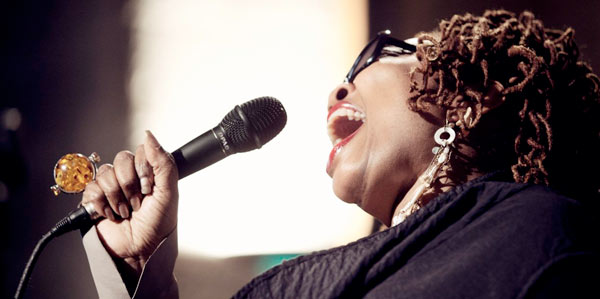What Makes A Recording Great?
I’m on a short leash today. The persistent problem in my lungs that started with pneumonia back in January continues and I’m going to the hospital to have a bronchoscopy this afternoon. Basically, my pulmonary specialist is going to send a small (hopefully very small!) camera into my lungs to take a look around. It’s sounds pretty bizarre but he still hasn’t been able to diagnose what’s driving my constant (and very irritating) cough. I haven’t been a patient in a hospital since high school when the back of my neck was the target for the surgeon’s knife. This should be an experience.
Another high-end audio writer and friend asked me about recording “presence” in an recent email. He wrote. “Presence at all volume levels…you don’t get presence, in other words, simply by turning something up. I just reviewed Kyle Eastwood’s new album on Jazz Village and it was well played and very fine as far as musicianship goes, but it was limp, little presence…I found myself wishing you had recorded him. I imagine microphones have a lot to do with it.”
What is presence? During my days working as a boom operator on film and television shoots, the sound mixer would complain if he lost “presence” in the sound he heard through his headphones. My job was to make sure that the shotgun microphone on the end of the boom was always pointed directly at the mouth of the actor. If there were several actors delivering lines, I had to anticipate the dialog and rotate my boom to position the microphone appropriately. It got easier with practice but it kept me on my toes.
If a microphone is on axis and in close proximity to a source or target sound, the quality of the sound heard through headphones or speakers will have the quality of “presence”. The sound is fully balanced, rich in overtones, intimate, and detailed. These qualities are attenuated if the microphone is farther away (read my post on the inverse square rule by clicking here), if excessive amounts of reverberation are added to a sound, or if filters/equalizers are used to change the alter the timbre of the sound (especially the high frequencies). However, an experienced mastering engineer can boost the “vocal formant” for a male or female singer and bring some presence back to a lackluster recording.
It is common practice to place microphones close to the instruments and voices of a live band and mix them using a console. This provides the best opportunity for the mixing engineer to balance and control the “presence” of each sound. If the recording was made with a stereo pair at some distance from the stage or band, the sense of presence can be lost. The engineer trades off the real world acoustic blend of the performance for the intimacy of a close mic…and the resulting presence.
The students that came to the studio the other evening were particularly impressed with the sound of the vocalists on my tracks. John Gorka, Jennifer Warnes, Destani Wolf, and even Albert Lee sang in front of the band. They were appropriately in the foreground even thought they weren’t in the actual session. They sang into a microphone that was only 6-10 inches away from their mouths. This allowed me to maintain the correct timbre of their voices AND properly place them in front of the rest of the ensemble. They are always panned in the front center position of the stereo or 5.1 surround mix, which also makes the sound important.
Got to run…see you tomorrow.


Can you “see” presence in the vocal or ambient data trace? Is it filtered out with over-engineering? Does it the Nysten-Shannon digitization process and express itself within 44.1/16 bits? We can hear it, but can we see it, in other words?
I’m sure there are things that would indicate whether one track is more present than another but I can’t say that I’ve ever looked. The easiest way is simply to listen. When a mic is directed at the source and rather close, it will have presence. Nyquist-Shannon has nothing to do with it.
Good luck with your test!
Is “presence” always appropriate? If I’m listening to music from 10 feet away, I’d expect the full spectrum of harmonics. If I’m 60 feet away, as I might be in a large audience, reverberation and the inverse square law might seriously intrude on the presence I’d hear. Can you comment?
Presence in a recording is not a requirement. Plenty of tracks…especially jazz and classical recordings…use only a few microphones located some distance away from the musicians. Most commercial pop/rock releases have microphones placed very close to the source sounds. It’s a matter of genre, taste, aesthetics, and technique. I personally prefer the sound of being close to the sound source.
Another great article that I agree with completely. Good luck at the hospital. Sure hope you aren’t forced to miss AXPONA. I already have my tickets and am really excited to meet you and hear some really great music on some really great equipment.
Things went very well yesterday…progress towards beating whatever is happening. I’ll be in Chicago for the AXPONA show, look forward to meeting you.
Good luck with the specialist, Mark
Thanks, things went very well.
To paraphrase Mr. Justice Black, I know one when I hear it!